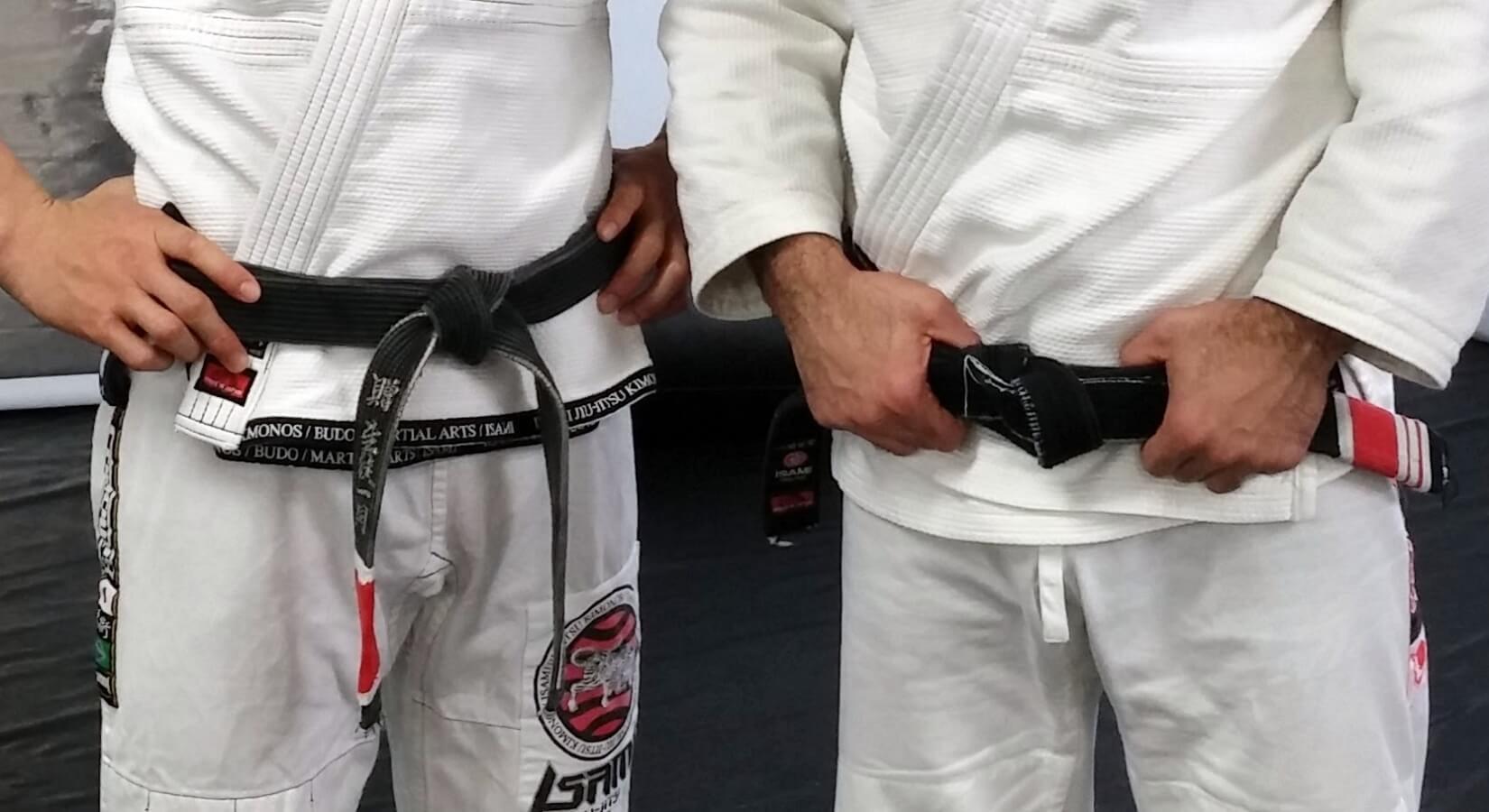Since BJJ ranking is not as strict and well defined as other more formal martial arts, Brazilian Jiu-Jitsu belts can come in many different flavors. One of the most common questions we receive is in regards to the rank bar (or sleeve) that comes on one belt end.
Did you know: Brazilian Jiu-Jitsu belts have a rank bar to differentiate them from Judo belts. Degrees or stripes are added to the rank bar. Color belts can have up to 4 stripes, whereas BJJ black belts have up to 6 degrees.
BLACK BELT WITH WHITE RANK BAR
This represents an athlete or "competidor" as it's called in Portuguese. This has been around since the early 1980s in Brazil however it was very rare to see anyone wearing such a belt (most likely because the BJJ fight gear industry was still tiny back then). Therefore most athletes would wear a black belt with red rank bar instead.
Nevertheless in recent years the black belt with white rank bar has made a come back in IBJJF competition. It might have started with multiple-time world champion Leandro Lo, who was not allowed to compete with a plain black belt and had the idea to wrap sports tape around one end to emulate the rank bar. Here at ChokeSports.com you can order our custom made BJJ black belt with a perfectly stitched White Rank Bar that's IBJJF approved and competition ready!
BLACK BELT WITH RED RANK BAR
This was and still is the most common add-on to Jiu-Jitsu black belts. There are two variations: plain red (for assistant instructors) and red with white borders (for head instructors). However in the real world this distinction is not really enforced and you'll find newly promoted students wearing red with white borders and high rank professors with plain red rank bars.
"I never had a black belt with a white rank bar. I was already an instructor when I got promoted, so my first black belt came with a red rank bar" - Master Fabio Gurgel, head of Alliance Jiu-Jitsu Association
BLACK BELT WITH BLUE RANK BAR
This is a somewhat more recent creation to honor Grand Master Helio Gracie's view of Gracie Jiu-Jitsu as a self-defense art first and foremost. In the early days of Jiu-Jitsu in Brazil there were no established ranks and the Gracie Academy instructors wore navy blue belts. Fast forward to the 1990s when BJJ was already taking over the world and GM Helio, who was a Red Belt 10th degree, would proudly wear a blue belt as a protest against the watering down of the art. Nowadays you can find black belts with a blue rank bar in some of the more traditional Gracie Jiu-Jitsu associations, such as Royce Gracie and the Valente Brothers in Florida.

BJJ COLOR BELTS
Brazilian Jiu-Jitsu color belts feature a black rank bar where the students can display their stripes (up to 4). Traditionally these rank bars are plain black and the stripes are made of white sports tape wrapped around the bar. Interestingly enough in Brazil nobody ever seemed to care about stripes on color belts. Most schools did not use them at all, even back in the days when it took years to progress to the next rank. It was only when BJJ became an international martial art that the use of stripes started to be the norm in most associations.
Interestingly enough in Brazil nobody ever seemed to care about stripes on color belts. Most schools did not use them at all, even back in the days when it took years to progress to the next rank. It was only when BJJ became an international martial art that the use of stripes started to be the norm in most associations.









